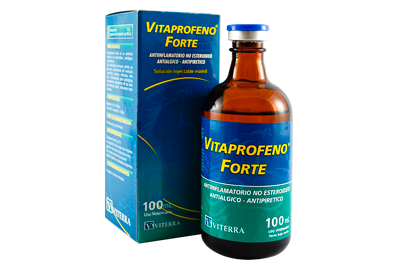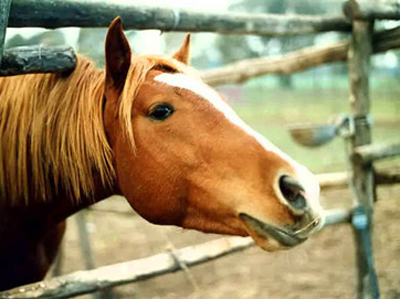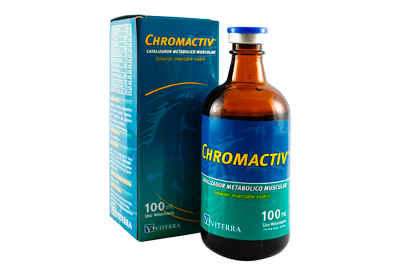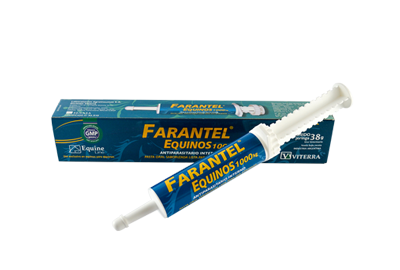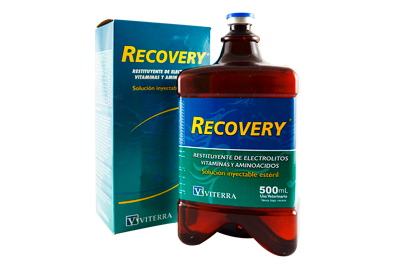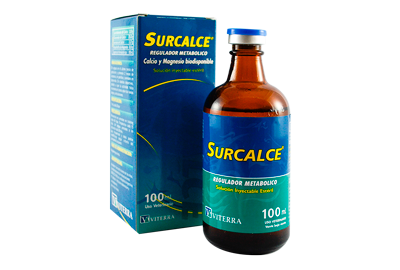Investigation
Hemo Plus Forte E
Objetivo
Evaluar la eficacia en el tratamiento de los trastornos de al hematopoyesis.
Diseño Experimental - Animales
Se utilizaron 4 caballos (2 Arabes, 1 Angloárabe y 1 SPC) clínicamente sanos con edades comprendidas entre los 3 y 6 años. Fueron numerados del uno al cuatro. El caballo uno y dos eran machos y el tres y cuatro hembras. Los caballos uno y cuatro recibieron la administración del Hemo Plus Forte por vía IM, mientras que los caballos dos y tres por vía EV.
Tiempos de Aplicación
Se administraron tres dosis de 10 mL de Hemo Plus Forte - E con 48 hs de intervalo entre cada una.
Tiempos de Extracción de Muestra
Se obtuvo una muestra de sangre por punción de la vena yugular pre tratamiento y la siguiente muestra se obtuvo de la misma forma a los 10 días pos tratamiento.
Determinaciones
Con cada muestra se realizó un hemograma completo, y en el mismo se prestó especial atención al conteo de glóbulos rojos, el porcentaje de hematocrito (Hto.), la concentración de hemoglobina y la hemoglobina corpuscular media (H.C.M.). Todas son variables de especial interés para el diagnostico de procesos anemizantes
Resultados
La tabla 1 muestra como solo el caballo dos presentaba tres de las cuatro variables evaluadas dentro del rango normal para la especie al inicio del estudio (solo presentaba baja la H.C.M.), mientras que los caballos uno y tres tenían dos variables por debajo del límite inferior aceptado como normal (hemoglobina y H.C.M.). El caballo cuatro presentaba tres variables por debajo de lo normal (Hto., hemoglobina y H.C.M.).
Los resultados pos tratamiento muestran que el caballo uno y cuatro incrementaron levemente, en relación a los valores de pre tratamiento, el valor de hemoglobina y la H.C.M., mientras que el caballo dos disminuyó la totalidad de los valores de las variables evaluadas y el caballo tres mejoró la totalidad de los parámetros evaluados.
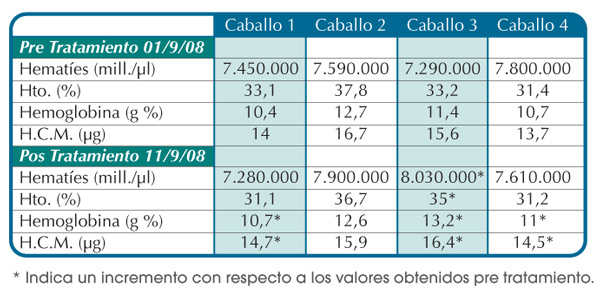
Conclusiones
- Los resultados pre tratamiento muestran como tres de los cuatro caballos tienen cierto grado de anemia.
- Los resultados pos tratamiento muestran como tres de los cuatro caballos mejoraron al menos dos de las variables evaluadas.
- El único caballo que no mostró mejora fue el caballo dos, que justamente fue el único caballo que por los resultados del hemograma no presentaba anemia al inicio del ensayo.
- A pesar de la mejora observada en tres animales, solo uno (caballo 3) podemos decir que se recuperó casi totalmente, mientras que el caballo uno y cuatro aún muestran valores por debajo de lo que se considera normal para la especie. Tal vez, el corto periodo de tratamiento no les permitió a estos animales recuperarse totalmente.
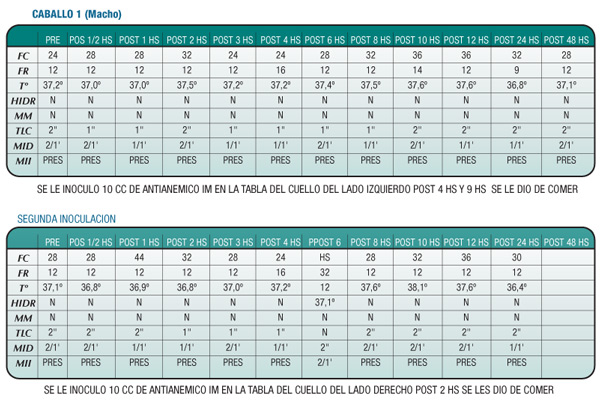
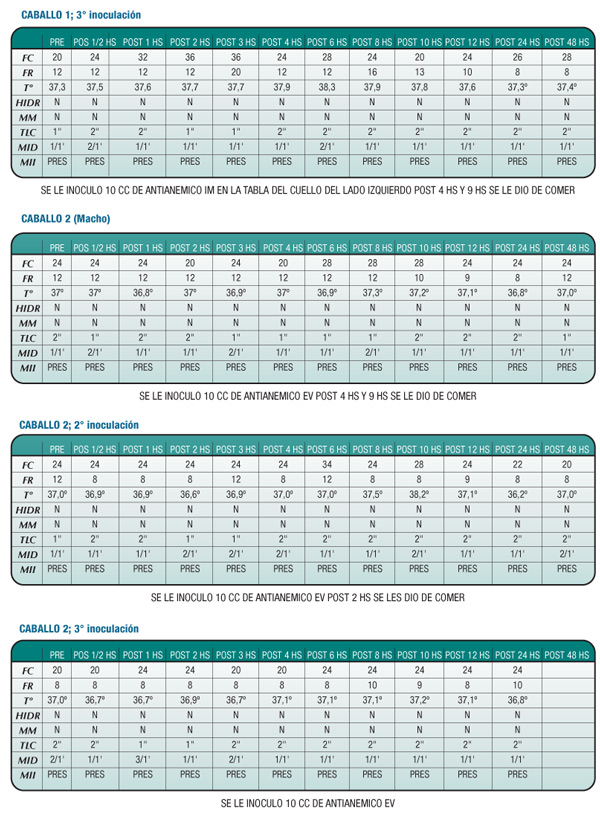
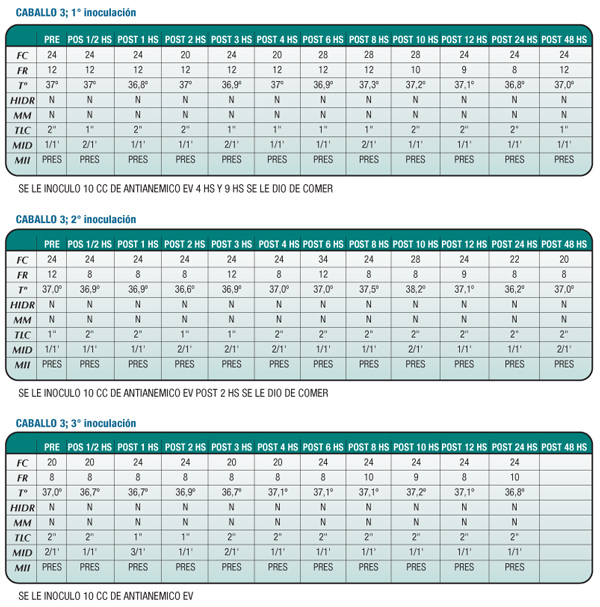
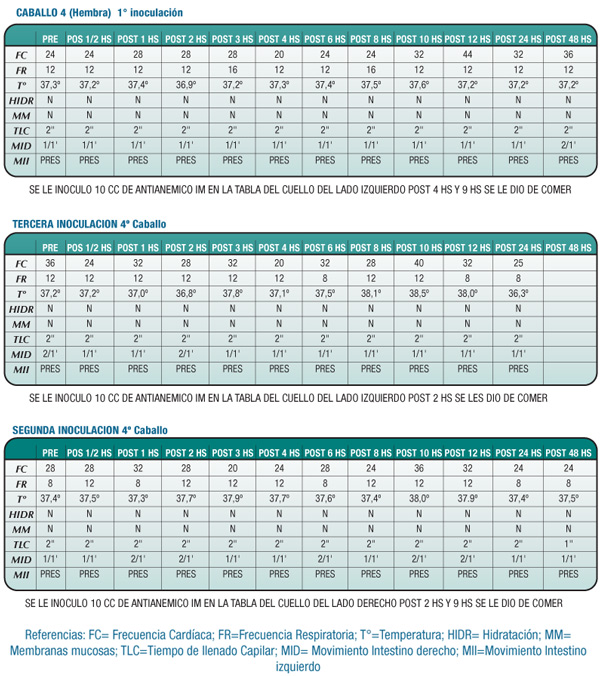
Objective
To evaluate the efficacy of the treatment in disorder of the
haematopoiesis
Experiment Design - Animals
Four horses (2 Arabs, 2 Anglo-Arabs - all thoroughbred race
horses) in a healthy clinical condition between three and six
years old were used. These animals were numbered from
one to four. Horses numbers one and two were male and
numbers three and four female. The horses, numbers one
and four, had Hemo Plus Forte administered to them by IM
via while horses two and three had the same administered
by EV via.
Timetable of Application
3 doses of Hemo Plus Forte were administered every 48
hours as indicated in the attached prospectus.
Timetable of Samplings
A blood sample from the jugular vein by puncture was taken
pre-treatment and another taken in the same way 10 days
post-treatment.
Determining Factors
A complete hemogram was carried out with each sample and
special attention was paid to the red blood corpuscle count,
the percentage of hemocrite (Hto), the concentration of
haemoglobin and the corpuscular haemoglobin (H.C.M).
(HCM) All these variables are of special interest in the
diagnosis of anaemic processes.
Results
Table 1 show how only horse two showed three of the four
variables assessed within the normal range for the species at
the beginning of the study (it only showed the H.C.M as
low), while horses one and three had two variables below
the lowest limit which is accepted as normal (haemoglobin
and H.C.M). Horse four showed three variables below the
norm (Hto., haemoglobin and H.C.M.)
The post-treatment results show that in horses one and four
the value of the haemoglobin and the H.C.M, slightly
increased in relation to the pre-treatment values, while in
horse two all the values of the variables assessed decreased
and in horse three all the parameters assessed improved.

Conclusions
- The pre-treatment results show that three out of the four horses had a certain degree of anaemia.
- The post-treatment results show that three out of four horses improved in at least two of the assessed variables.
- The only horse which did not show any improvement was horse two which was precisely the only horse which did not show any signs of anaemia at the start of the testing.
- Despite the fact that improvement was observed in three animals, the only horse that can be said to have practically recovered almost completely is horse three, while horses one and four show values below what is considered normal for the species. Perhaps the short period of treatment did not allow these animals to recover completely.




Other investigations
Official Certificate N°013-2016 emitted by SENASA
GMP - Good Manufacturing Practice for Veterinary Drugs
Viterra
Contact
- (+54 11) 4855 9410
- info@laboratoriosangroinsumos.com
- Caldas 175, Capital Federal, Buenos Aires, República Argentina
